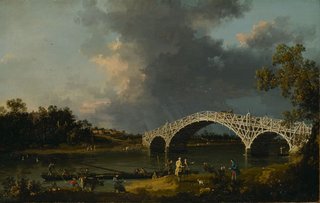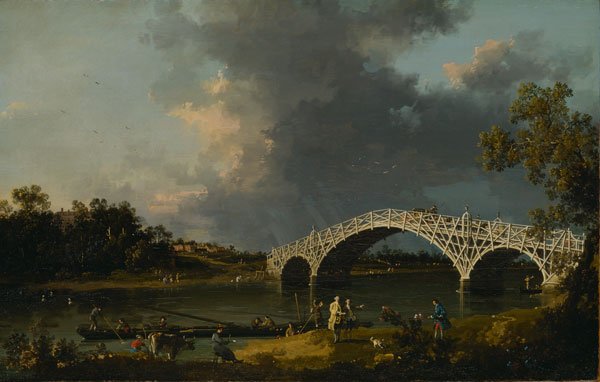-
Acquisition
Presented by Miss E. Murray Smith, 1917
-
Accession number
DPG600
-
Artist description
Canaletto (Giovanni Antonio Canal)
-
Date
1754
-
Dimensions
48.7 x 76.4 cm
-
Materials
Oil on canvas
-
Notes
Adopted by Mr Bill Acquavella, 1994
-
Inscription
Inscribed verso: 'Fatto nel anno 1754 in Londra per la pri[ma] ed ultima [volta con ogni maggior attenzione] ad instanza [del Signor Cavaliere Hollis] padrone mio [stimatissimo/ Antonio Canal detto il Canaletto]. It was nece[ssary to new line the picture in 1850] so the inscript[ion is hid. John Disney, 1850].
The Italian artist Giovanni Antonio Canal, known as Canaletto (1697-1768), made his name with brightly painted views of famous Venetian sites and the surrounding countryside, often commissioned by affluent British patrons as mementos of their visit to the city. Travel to Italy became increasingly hazardous following the outbreak of the War of the Austrian Succession in 1741. Therefore, in order to regain access to his most lucrative market, Canaletto embarked upon a stay in England from 1746 to 1756. The bridge at Walton, some twenty-five miles southwest of central London, was constructed four years before Canaletto painted this view, and was considered to be a remarkable feat of engineering. Known in Venice for his meticulous skills at depicting light and meteorological effects, Canaletto carefully captures the shifting English weather as rays of sunshine burst through dark clouds with the heavy threat of rain.
According to an inscription found on the reverse of the canvas, A View of Walton Bridge was painted for Thomas Hollis (1720-74), a wealthy political philosopher and author who was active in British cultural life and commissioned five other views from Canaletto. An early catalogue of his collection describes the towering figure in yellow as Hollis; along with his lifelong friend and heir, Thomas Brand; his Italian servant, Francesco Giovanni; and his dog, Malta. The man sitting a little away from the group sketching the scene is Canaletto himself, making this painting a rare example of the artist inserting his own self-portrait alongside his patron.

Want to use or download this artwork?
For personal use - Download artwork
For commercial use - Purchase a licence & download on Bridgeman images
